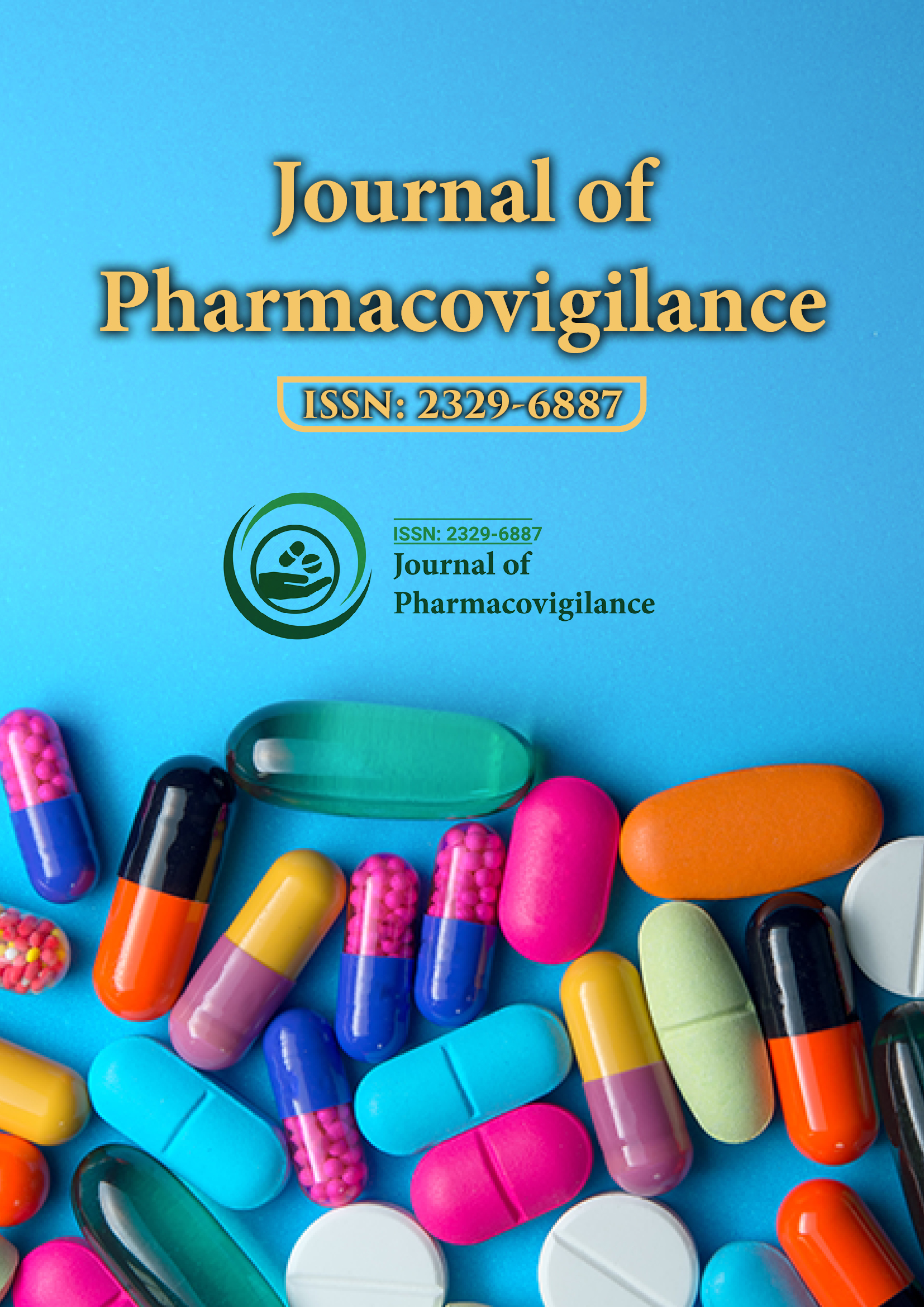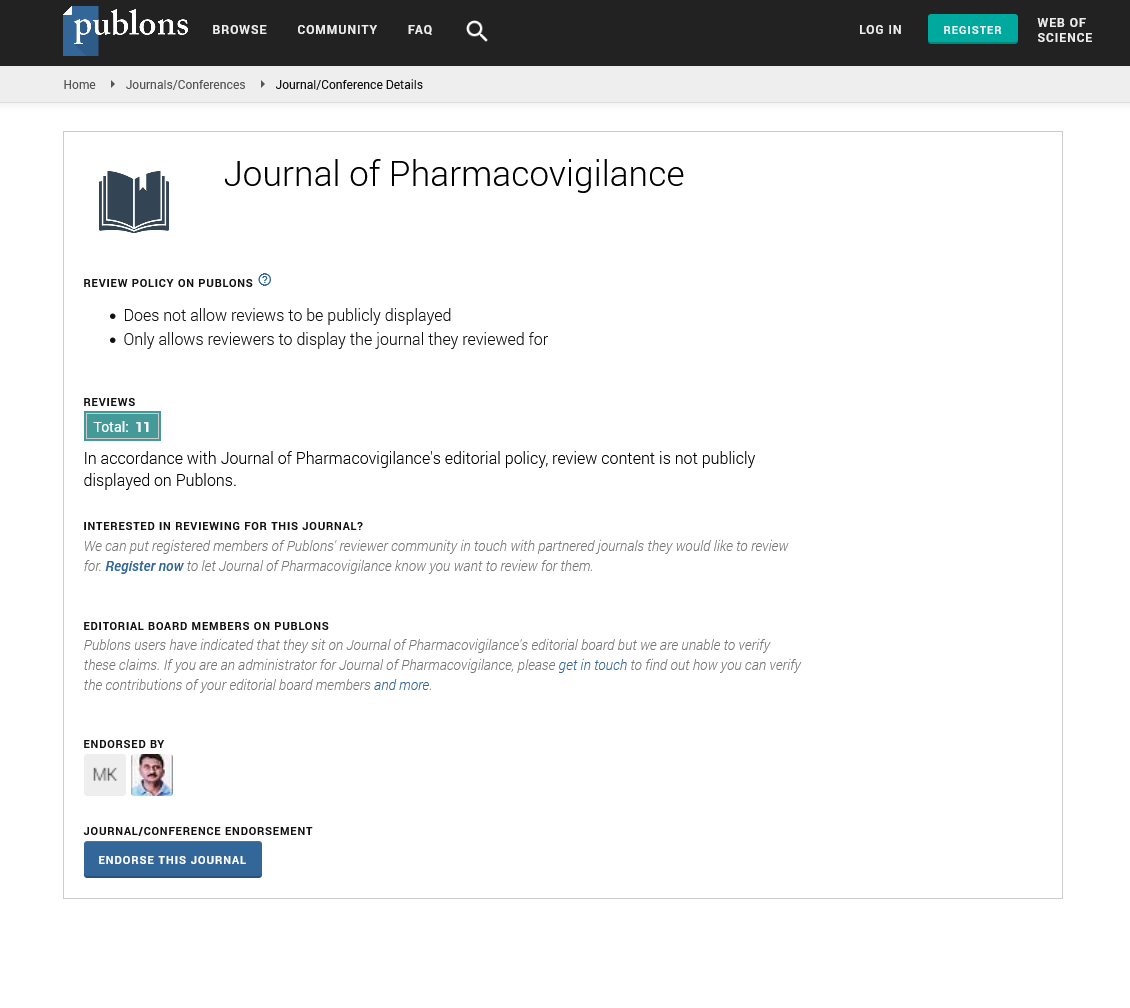Indexed In
- Open J Gate
- JournalTOCs
- The Global Impact Factor (GIF)
- RefSeek
- Hamdard University
- EBSCO A-Z
- OCLC- WorldCat
- Publons
- Euro Pub
- Google Scholar
Useful Links
Share This Page
Journal Flyer

Open Access Journals
- Agri and Aquaculture
- Biochemistry
- Bioinformatics & Systems Biology
- Business & Management
- Chemistry
- Clinical Sciences
- Engineering
- Food & Nutrition
- General Science
- Genetics & Molecular Biology
- Immunology & Microbiology
- Medical Sciences
- Neuroscience & Psychology
- Nursing & Health Care
- Pharmaceutical Sciences
Integration of in vitro biorelevant dissolution and in vivo bioequivalence study to in silico PBPK modelling of furosemide oral formulations to predict bioequivalence in dogs by PBBM approach
16th International Conference and Exhibition on Pharmacovigilance and Drug Safety
August 21, 2023 Webinar
Cristian Valiante
University of the Republic, Uruguay
Posters & Accepted Abstracts: J Pharmacovigil
Abstract:
In Uruguayan veterinary medicine there is currently no regulation that ensures the biopharmaceutical quality of the products that are presented at the pharmaceutical market. Furosemide is widely used in cardiological therapies in canines (Bikdeli et al., 2013), however there is a lack of knowledge regarding the dose-exposureresponse relationship and the impact of multi-source drug products with no bioequivalence evaluation. In this work, we aimed to predict the relative bioavailability between two furosemide oral local products available for use in dogs by means of physiologically based biopharmaceutics modeling (PBBM), integrating formulation-related parameters estimated through in vitro dissolution testing in a PBPK model (Ibarra et al., 2019; Lu et al., 2017). Further, the model predictions were validated with a bioequivalence study in healthy dogs (n=6). A previously reported furosemide PBPK model for humans (Britz et al., 2020) was adapted to dogs in PK-Sim® and MoBi® (Open Systems Pharmacology) using literature pharmacokinetic data in plasma and urine after intravenous and oral administration (Koh et al., 2021; Lee et al., 1986). Model was optimized including a concentrationdependent increase in renal blood flow, affecting furosemide renal excretion. Dissolution profiles from two local products obtained in biorelevant conditions were fitted with a gompertz model and included in the PBPK model to describe drug dissolution. Single-dose furosemide Cmax and AUC for both formulations were predicted with a relative bias below 20%. The PBBM approach predicted adequately furosemide pharmacokinetics and the relative product performance in dogs and has been shown in this research to be an effective tool that can be used by laboratories in the pharmaceutical industry and by state agencies in charge of pharmaceutical regulation of veterinary products. An alternative method to the clinical trial was developed that can make predictions with an adequate level of confidence and markedly lower requirements for infrastructure and research resources.
Biography :
Cristian is a graduated Italian pharmacist and scientist by training, passion and vocation. He has a Master of Science (MSc.) in Pharmaceutical Sciences with strong experience and specialization in Clinical Research. He is a highly motivated and outgoing person with a genuine passion for scientific excellence in pharmacology and pharmacy. Cristian works with perseverance and dedication and enjoys teamwork and multidisciplinary research. He has specialized over the years in clinical pharmacology and pharmacokinetic and pharmacodynamic modelling in animal and human species (adult and pediatric population)

